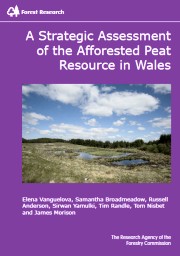Summary
An assessment of the distribution of the Welsh peatlands, based on best available spatial information.
It is widely acknowledged that soils under woodland are generally well protected and are often improved. The development and implementation of best practice as exemplified by the Forestry Commission’s water guidelines within the UK Forestry Standard means that the planting and establishment of new woodland offers an effective approach to reducing sediment losses in problem areas.
Woodland has been shown to benefit sediment control in the following ways:
- By providing physical shelter from the wind
- By reducing water run-off
- By increasing the entry of rainwater into the soil
- By improving soil strength and stability.
This guide describes the catchment approach that is being developed by a partnership of organisations in Cumbria in northwest England to control sediment inputs to Bassenthwaite Lake. It sets out the steps taken to identify the main sources of sediment and explores how woodland could help to alleviate the problem.
Although the results may not be directly transferable outside Bassenthwaite, the guide provides a useful framework for addressing the sediment issue in other catchments.
The Bassenthwaite Lake Restoration Programme is one of a number of partnerships involving the Forestry Commission in North West England.
Findings and Recommendations
This report:
- Delivers an improved distribution map of the upland blanket peat and deep peat soils resource at the highest resolution.
- Includes an improved map of the distribution of afforested deep peats in Wales and ownership of forested land in Wales.
- Provides an overview of the likely impacts of peat forming factors and afforested peatland restoration and management on the biodiversity, hydrology and greenhouse gas (GHG) benefits.
- Develops national and field based assessment schemes based on rule based criteria, proxy factors and thresholds for the assessment of afforested peatland in Wales viable for restoration.
- Carries out a national GIS assessment identifying potential restoration areas in Wales.
- Tests the field-based assessment by ground truthing a number of sites in Wales.
- Provides relative costs of afforested peat restoration.

